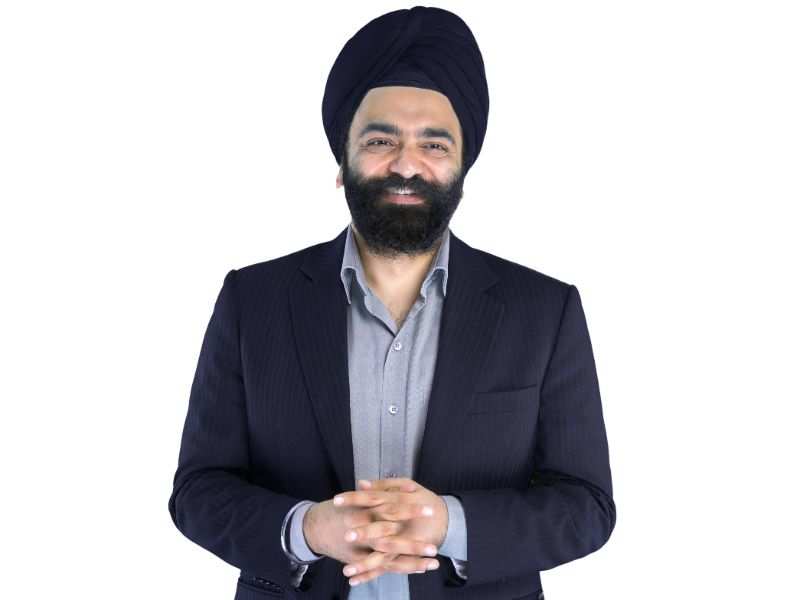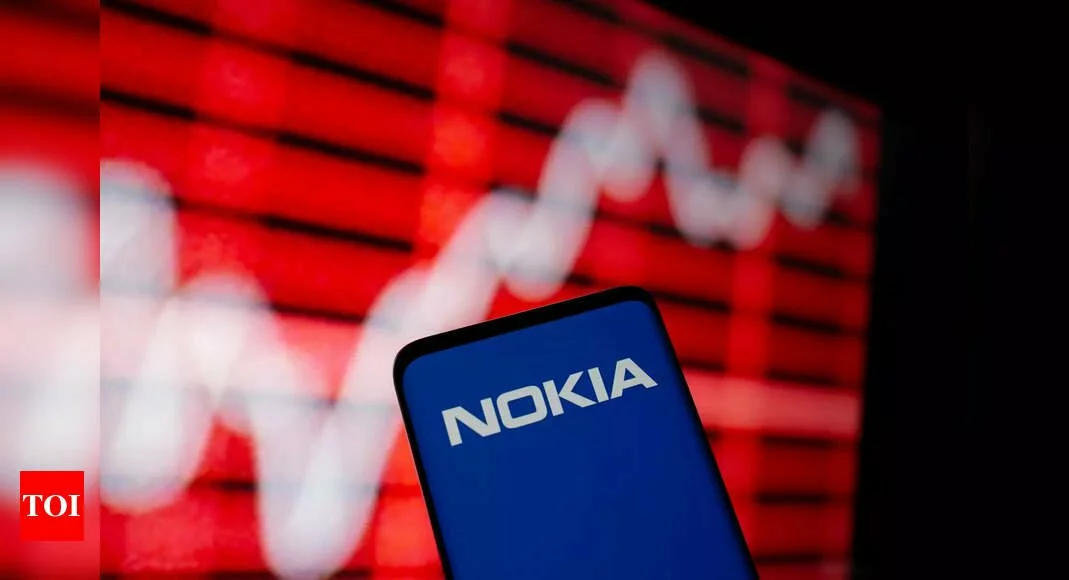Let’s talk Android updates, device security, build quality and not just low cost: Nokia mobiles – Times of India
Sanmeet Singh Kochhar, Vice President for HMD Global, in a freewheeling conversation with Manisha Singh of The Time of India– Gadgets Now discusses how Nokia holistically evaluates a phone and not in terms of just price and specs. A pure Android experience without any bloatware, timely Android updates and security patches and not to forget a good build quality is what Nokia prioritises over how much RAM or what SoC you can get for the lowest possible price while buying smartphones. Excerpts…
Nokia is still majorly operating in the entry-level segment where value-for-money matters a lot. And if we do a price-to-specs ratio of Nokia phones, they do fall short there. Right now there are so many people who are looking at non-Chinese options. And Samsung in the last few months have been on a launch-spree. They have launched devices across price ranges. But we don’t see the same kind of response from Nokia.
Sanmeet Singh: I agree, that the segment which is less than Rs 12,000 is a very price sensitive segment. We have seen in the last few years that the device market is getting commoditized. Everybody is looking at what is the spec, what is the price, whether it has one camera or three cameras, whether it is 16 MP, 24MP or 32 MP. Similarly, whether it is 2GB RAM or 4 GB RAM, what is the screen size.
It has become a commoditized market and that is how people are looking to buy. In this market, the way we look at price is not like buying commodities. We look at the price value equation over the lifetime of the device.

Sanmeet Singh Kochhar, Vice President for HMD Global
So for example, if someone would have bought around 2 years ago, the Nokia 5.1 Plus or Nokia 6.1 Plus that offered Android Oreo out-of-the-box , and would have bought another competitive device also on Android Oreo. Maybe the competitor price would be Rs 500 cheaper at that point. But then over a period of time these Nokia smartphones got upgraded to Android Pie, and then to Android 10. Apart from the two Android upgrades, it got additional artificial intelligence-based features like adaptive battery, adaptive brightness, along with multiple other features which are based on software upgrades.
Another thing is with the whole geopolitical situation that comes in, and with the whole shift towards digital, people are spending a significant amount of time on their phones as much as or more than six seven hours in a day. They also have a lot of their stuff including bank accounts, password, Google searches, messages, photos, and therefore security becomes very important. Nokia is the only one who is offering monthly security updates on the device over a period of 3 years. Every month, irrespective of what device you’re buying, starting from our 2 Series, consumers get security patch updates and therefore become the most secure devices.
While Nokia offers timely Android and security updates, very few people seem to understand this. Ayny comments?
Sanmeet Singh: A lot of buying happens, based on what is the spec-price equation which we are trying to move away from. Also, with this whole geopolitical situation panned out, these issues are now coming to the fore and are becoming more important for consumers.
Similarly, just two more points I want to mention on this feature value equation. First, being the Nokia build-quality craftsmanship and overall testing that we do. As per the Counterpoint Research that came out in October this year, build quality of phones was evaluated on several criteria including product robustness, force measurement, drop and impact, fatigue, wear and scratch, thermal tests or even the USB cable coming into the charging port and looking whether that is durable or not. What came out was that Nokia phones go through 33% tougher tests than industry average. Therefore, in the build quality and craftsmanship, we score much over the others.
So a Nokia phone is a future proof device, not only in terms of software, but also hardware. Especially now that people are holding on to their phones for longer, almost 30 months.
Many of the factors that you have mentioned will definitely matter to a customer to a person buying above Rs 30,000. But, Nokia still doesn’t have a device there. While OnePlus felt the need to come down, HMD still has not gone up the ladder there. The consumer at the upper end definitely understands these features more than one at the lower end. So, how come we don’t have a Nokia device above Rs 30,000 since the last two years?
Sanmeet Singh: Yes, so for the Indian market, we still have the Nokia 9 Pure View that is still available for our fans. It was a unique device that used five cameras at the same time.
The partnership with Carl ZEISS for the Nokia 9 Pure View is very important, but do you think the customers in the sub-Rs 15,000 segment will understand?
We have always said that our endeavour has been to democratise technology and bring the technology to the masses whatever is available at high end. So, whatever is available in the high-end i.e. pure Android, security updates, build quality, design, ZEISS optics and building that into our already automated intelligent design cameras, and we are trying to bring it to the masses. While I am sure not everybody looks at it like that but there is an evolution which is happening and people are realizing the value of this.
Going forward, the next stage of evolution in the device technology, while it will continue to be in hardware but it will be as much in the software, where people would realize that all Androids are not the same.
Like there is a difference between Android which was released three years back and what is released now and what would be released two years from now. So if you’re buying a device, you know for a fact that, that device is going to carry the latest software two years from now, and will continue to get security updates three years from now and this is a big value addition.
Moving away from smartphones, you guys have also not launched any accessories lately. Your thoughts?
Sanmeet Singh: So moving away from smartphones, there were a couple of points I would want to make. We have cracked some milestones and they are some important points that would be good to talk about.
We are leaders in feature phones around the world and in India. In June 2020 we launched the Nokia 5310 XpressMusic, when we were coming out of the lockdown. We launched it online and created a history on a feature phone device. In terms of numbers, we have sold hundreds of thousands of these devices that we launched and I think a history was created in the online channel. Nobody has sold that kind of device at the time of launch and that too in the online channel at the time of launch.
With that device, we had targeted that device, and people who are looking for digital detox. It was three months into the lockdown and people were spending their time on the screens on their phones.
Which are the two important segments that Nokia is targeting?
Sanmeet Singh: So, in smartphones, one segment is the set of people who are upgrading to a smartphone for the first time and the second segment is the smartphone replacers who are looking for an all-round device, which is under Rs 15,0000. This is another big segment where people are looking to replace a smartphone device and want to get the best, high end smartphone experience at this price point, an all-rounder device which will have a two day battery life, AI camera capabilities, good processing speed, and be the best in terms of security, software and design.
Usually other players in the market are moving higher up the price ladder. Why are you still looking at the low-end smartphone segment?
Sanmeet Singh: These are the primary segments for us in India, but at the same time, there will be other segments and will be launching our device in other segments as well. We will be focusing across our portfolio, not only these devices. In fact one of the things that we have said is that next year we will be going we are going to be bringing the 5G portfolio as a mass market and that is something that we will be focusing on quite a bit as well as we move forward.
What about local manufacturing and your strategy in general?
Sanmeet Singh: We have spoken about our portfolio and then we are looking at our channels. We have a very strong distribution channel in India that is supported by our Nokia Mobile Care. We have a strong presence in the offline channel in India, and also have a very good relationship with our online partners.
In terms of manufacturing, India is a very important market for us not only from our fans and consumers point of view and the fact that it’s the second biggest market globally for smartphones, but also from a sourcing point of view. Today 100% of our phones are manufactured in India.
RSMI (Rising Star Manufacturing) manufactures phones for us every month and has a set up in Chennai. Apart from RSMI, we also have partnerships with different ODM players with whom we manufacture phones across India. Rising Star Manufacturing is a subsidiary of Foxconn and the biggest manufacturing they have for Nokia phones is near Chennai.
100% of devices are made in India. And also, we are not only looking at products for domestic consumption, but also evaluating how we can grow the overall ecosystem in India and what can we do to move this whole supply chain ecosystem from China to India.


